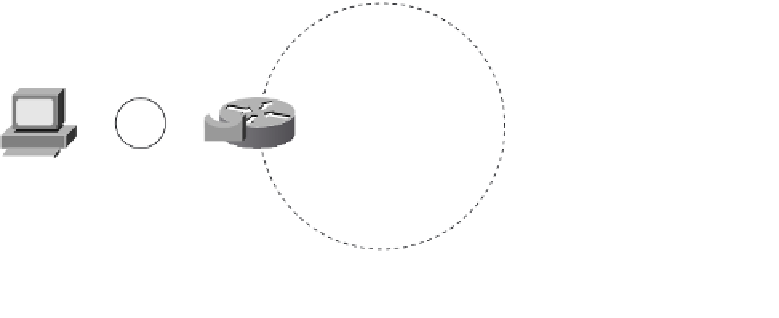Information Technology Reference
In-Depth Information
methods. RSRB routers create the same virtual ring number that is a logical ring that
encompasses both routers. There are four methods of transport:
•
Direct
•
Frame Relay
•
Fast Sequenced Transport (FST)
•
TCP
If you use direct encapsulation over serial lines, they need to have high-level data-link control
(HDLC) encapsulation. Direct encapsulation can run over Ethernet, Frame Relay-ATM Inter-
working, or serial interfaces. If you use TCP encapsulation, RSRB traffic can be prioritized over
WAN links.
RSRB Configuration
The configuration of RSRB involves the regular SRB configuration with virtual rings. All rout-
ers in RSRB need to have the same virtual ring number configured. The additional configuration
command is the configuration of
source-route remote-peer
statements. The configuration of
every RSRB encapsulation is not presented in this subsection. Example configurations follow
for direct and TCP RSRB encapsulation. More information on RSRB is at the site
www.cisco.com/warp/public/701/2.html.
RSRB with Direct Encapsulation
Looking at Figure 4-26, Router A connects to Router B through a serial line. The RSRB
configuration is shown in Example 4-9. The
source-bridge remote-peer 10 interface serial 0
command defines the RSRB remote peer as being available through serial 0.
RSRB with Direct Encapsulation
Figure 4-26
Virtual ring 10
1
2
6
serial link
5
Router A
Router B
Host A
Host B




















Search WWH ::

Custom Search